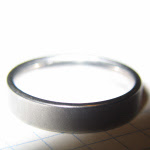
This is a waveform plot from the opening two seconds of the third movement of Bela Bartók's second piano concerto, conducted by Pierre Boulez, recorded in this decade, and released by Deutsche Grammophon in 2005. There is an opening drum hit, shown here, that is fairly unequivocally clipped near 0dbFS for 121 samples (2.7 ms). This is a large length of clipping by most standards.
In many music listener's minds this would be considered a gross mastering error. But the sound quality notwithstanding is spectacular, and the long-term loudness plot shows no signs of hypercompression (or indeed, perhaps any compression): the peaks of the music are merely being sawed off. However, I have no independent proof showing that the recording has not been compressed in other ways.

A very similar style of mastering can also be found on two other recent Boulez discs: one of Varèse, and another with his own ..explosante-fixe... and Notations (the latter played by Aimard). These recordings consistently brickwall-clip at or near 0dbFS, for between 4-100 samples, but otherwise are mastered clean as a whistle. But another recent DG CD of mine (Aimard's performance of Bach's Art of the Fugue) has no clipping whatsoever.
It's important to note that, as I've mentioned in the past, drum transients are perhaps the kind of signal most forgiving of clipping/limiting. As they are already very spread out in the frequency domain, the added smearing from this kind of clipping could be rather effectively masked. Listening to this music, there is no "snoking gun" kind of artifact that lets me say with certainty that this distortion is audible.
Nevertheless, that DG would choose to make this sort of compromise in their modern releases is troubling. I used to consider Boulez's recording of Amériques one of my reference tracks for critical listening; I'm considering searching for alternatives now.
Original thread on HydrogenAudio.
Update 19 May 2009: Steve Hoffman notes that the recent DG CD of Boulez's Maher 8 is also clipped.




7 comments:
Interesting. I'm quite surprised to find something like this in a classical recording. On the other hand, I probably wouldn't suspect such a small quantity of clipping after a listen.
[Also, you've got a "snoking gun" up there, which is something I've never heard of, but something I'd like to witness.. :o) ]
I would guess the producer simply didn't want to lower the overall level by allowing the true peak value of the drum hit -- perhaps because then the consumer might find the CD 'too quiet' during the quiet parts (a complaint sometimes heard about orchestral CDs that employ maximum dynamic range)
They could have tried compression, I suppose, as a compromise....
Isn't it possible that the clipping occurred during recording rather than during mastering?
Only if these were absolutely flat transfers of the recorded content - and if a 2-mic (farfield) recording scheme is used. And not all classical records are that clean. Especially not major label classical!
If you are trying to do it yourself though, throw away all the pre-conceptions and ideas you have inherited from the recording and mixing process, and start afresh. Be prepared to cut swathes through all the detailed decisions and reasoning you've put into the project music mastering
You guys out there are performing a great job.
mastering studio
Post a Comment